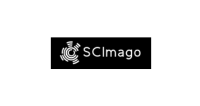LOW DOSE OF COPPER IS MORE EFFECTIVE ON INTESTINAL MORPHOLOGY IN WEANED PIGS
DOI:
https://doi.org/10.5380/avs.v25i4.69303Palavras-chave:
Copper sulfate, pharmacological level, tribasic copper chloride, weaningResumo
The present experiment was carried out to determine the relation between pharmacological levels of copper (Cu) (125 and 200 mg/kg) and source (cooper sulfate (CuSO4) and tribasic copper chloride (TBCC)) on growth performance, diarrhea incidence and intestinal morphology of piglets after weaning. At 21 days of age, 96 weaned piglets were sorted by body weight (BW, 6.14 ± 0.269 kg) and randomly assigned to 4 treatments according to a block design of a 2 x 2 factorial arrangement: level (125 and 200 mg/kg) and source (CuSO4 or TBCC). Growth performance was evaluated by measuring BW, average daily feed intake (ADFI), average daily gain (ADG) and feed conversion ratio (FCR) from 21 to 63 days of age. Fecal score was evaluated daily and at 63 days of age tissue samples were collected from the duodenum, jejunum and ileum for intestinal morphology analysis. At this moment, it was evaluated villus height (VH), crypt depth (CD) and villus height to crypt depth ratio (VH:CD ratio). There was no difference between level and source (P>0.05) for any growth performance. Piglets fed 200 mg/kg TBCC had the lowest diarrhea frequency (P<0.05) in overall nursery period than the other treatments during the whole experimental period. Supplementation with 125 mg/kg increased VH (P<0.05) and VH:CD ratio (P<0.05) in the duodenum when compared to 200 mg/kg, regardless of the source. Based on our results, we can conclude that 125 mg/kg of Cu improve the VH and VH:CD ratio in the duodenum and may show growth performance results similar to 200 mg/kg of Cu.
Downloads
Publicado
Como Citar
Edição
Seção
Licença
Autores que publicam nesta revista concordam com os seguintes termos:
- Autores mantém os direitos autorais e concedem à revista o direito de primeira publicação, com o trabalho simultaneamente licenciado sob a Creative Commons - Atribuição 4.0 Internacional que permite o compartilhamento do trabalho com reconhecimento da autoria e publicação inicial nesta revista.
- Autores têm autorização para assumir contratos adicionais separadamente, para distribuição não-exclusiva da versão do trabalho publicada nesta revista (ex.: publicar em repositório institucional ou como capítulo de livro), com reconhecimento de autoria e publicação inicial nesta revista.
- Autores têm permissão e são estimulados a publicar e distribuir seu trabalho online (ex.: em repositórios institucionais ou na sua página pessoal) a qualquer ponto antes ou durante o processo editorial, já que isso pode gerar alterações produtivas, bem como aumentar o impacto e a citação do trabalho publicado.













